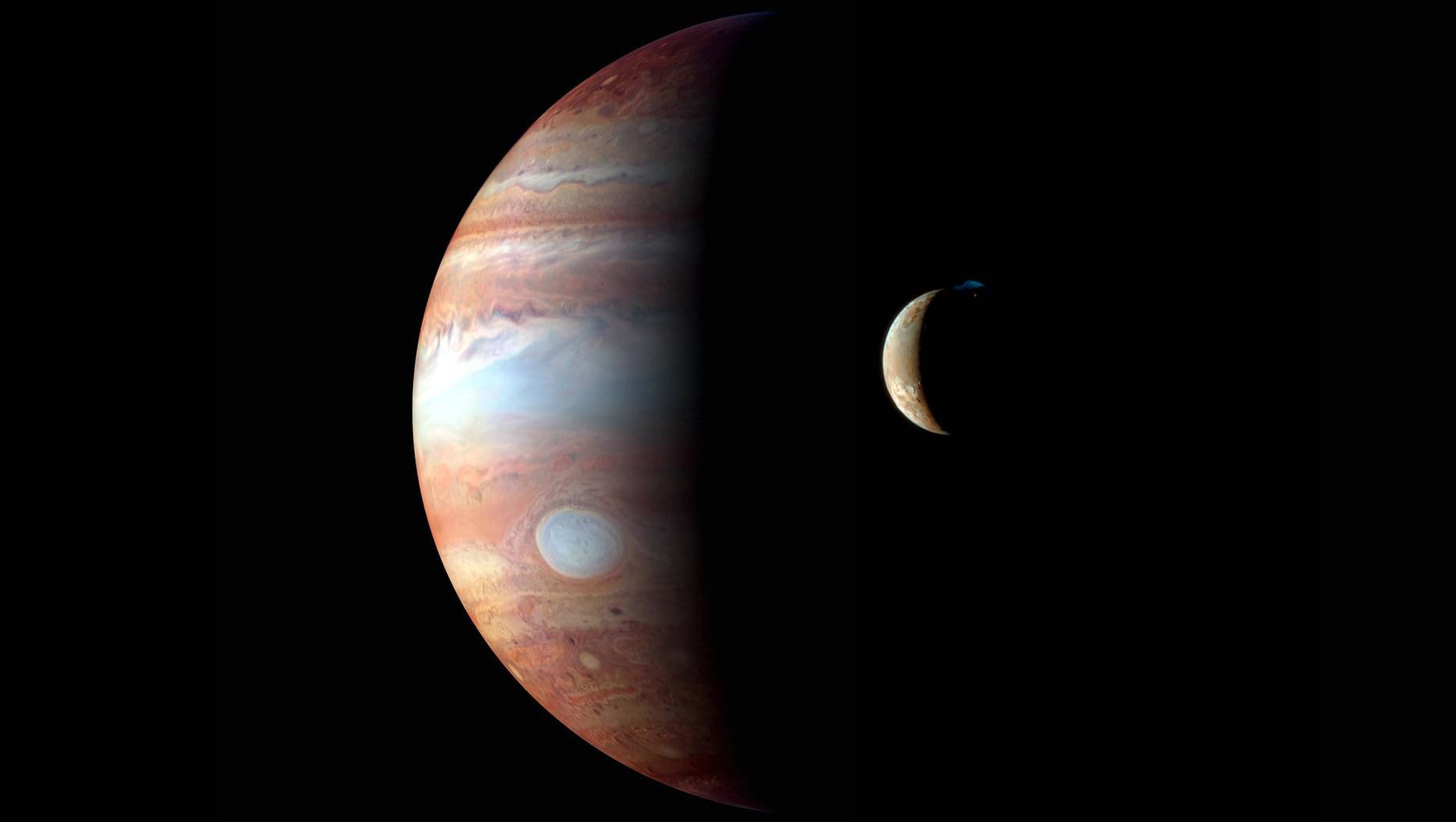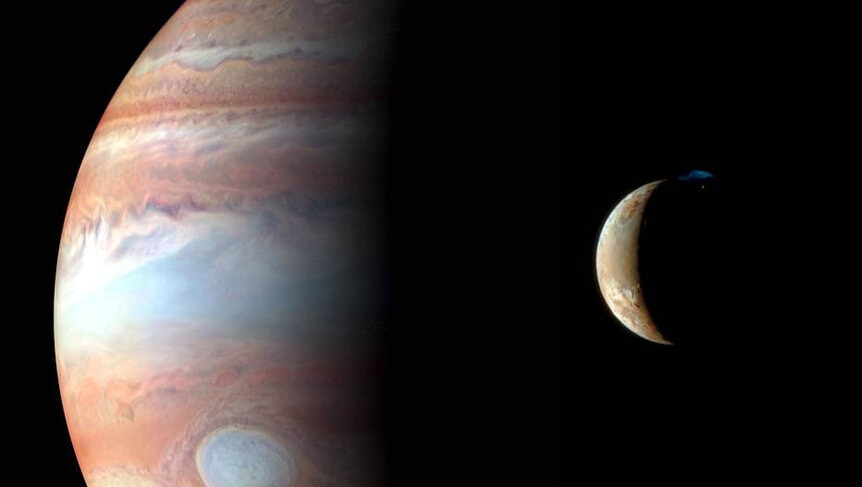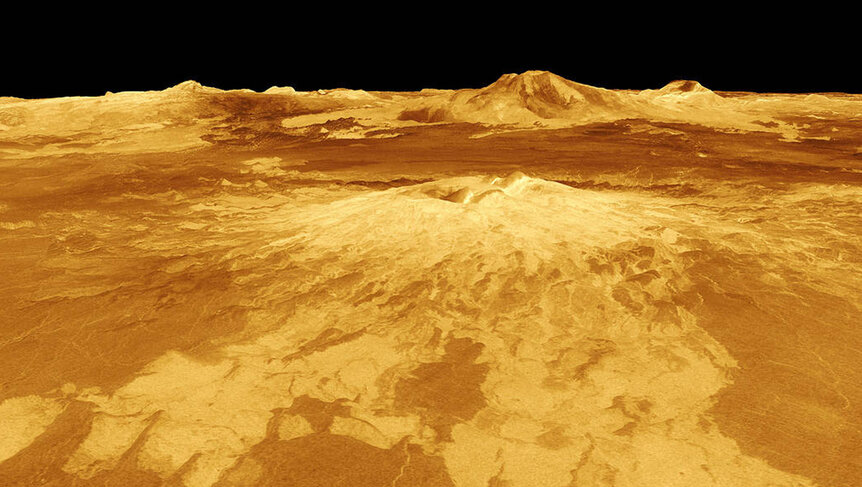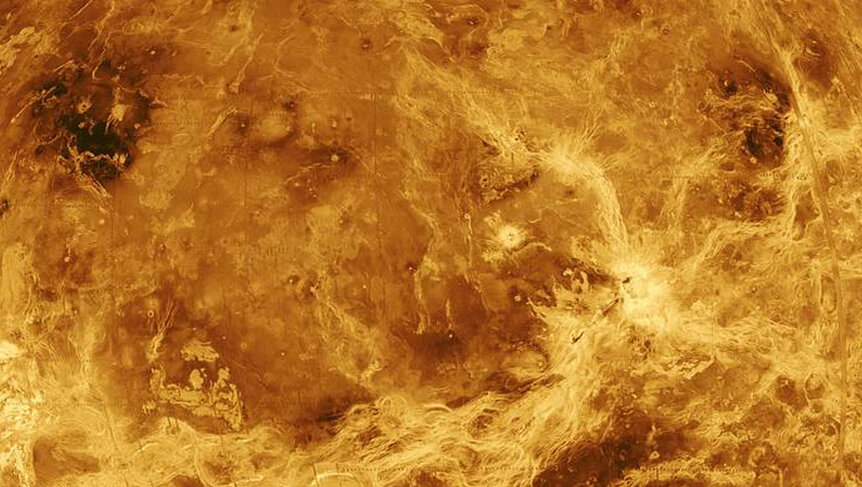Create a free profile to get unlimited access to exclusive videos, sweepstakes, and more!
Fascinating new NASA mission concepts will make you want them all to launch

With all the hype surrounding the next lunar landing and an upcoming trek to Mars, it’s kind of easy to forget what other alien frontiers NASA is looking to explore.
The space agency’s Discovery Program has just chosen four far-out studies whose development it will fund for nine months. Discovery ultimately wants spacecraft to go where no mission has gone before (or observe aspects of a celestial body that previous missions never have). Unfortunately, only one or two of these ultracool concepts will make it, and you’ll see why that is such a bummer after finding out what kinds of strange and fascinating worlds these potential missions could shed more light on.
"These selected missions have the potential to transform our understanding of some of the solar system's most active and complex worlds," said associate administrator of NASA's Science Mission Directorate Thomas Zurbuchen. "Exploring any one of these celestial bodies will help unlock the secrets of how it, and others like it, came to be in the cosmos."
Neptune’s mysterious moon
Last time anything got remotely close to Triton, it was Voyager 2, which could only see the moon’s southern hemisphere. Trident is a proposed mission that would get into all the weirdness of this moon that could possibly tell us how habitable worlds come into being. Triton has the second youngest surface in the solar system because of plumes that also make it one of the most active bodies known to exist in the outer solar system. They spray liquid nitrogen and methane into its freezing atmosphere, which then crystallizes into the pink snow that dusts its surface. These plumes are thought to be the aftermath of tidal heating that melted its insides and brought on an explosion of volcanic activity.
Enceladus is another moon that spews such plumes into space but still has not had an official mission approved by NASA. If we end up sending a mission to Enceladus, we have to blast something off to Triton.
The exploding moon of Jupiter
Io is the most volcanically active celestial body out there—at least that we know of. It belches fountains of lava miles into the atmosphere. This is what the Io Volcano Observer (IVO) would zero in on. Because Io is caught between the crushing gravitational power of Jupiter and the less intense pulls of neighboring moons Europa and Ganymede, which send its orbit out of whack. This is what makes the surface so unstable and generates scorching heat that liquefies its innards. IVO’s close flybys could really give insight into these geologic processes. Io also has a self-renewing surface, though this scorching hot moon that constantly gives its impact craters makeovers with molten lava is the opposite of glacial Triton.
IVO would brave the heat to find out how Io generates and erupts with magma. This could help us understand the formation of both ocean worlds and rocky, terrestrial planets like our own.
The face of Venus
Venus is suspected to have formed much like Earth—there might have even been water—but what happened? Its heavy atmosphere is now swirling with sulfuric acid clouds, and the temperatures skyrocket high to 900 degrees, which can easily melt lead. VERITAS (Venus Emissivity, Radio Science, InSAR, Topography and Spectroscopy) would try to learn more about how Venus deviated from Earth as it was going through its temperamental years in the early solar system. The spacecraft will use radar to chart the blistering surface and turn those images into 3D reconstructions of its topography, which could divulge secrets about plate tectonics and whether volcanoes ever where and possibly still are active on Venus.
VERITAS would also map infrared emissions from the Venusian surface that would then be used for mapping the planet’s geology, which is still something of an enigma.
Venus on a deeper level
Speaking of Venus, DAVINCI+ (Deep Atmosphere Venus Investigation of Noble gases, Chemistry and Imaging Plus) would plunge into the planet’s brutal atmosphere to learn what it’s made of, from its toxic clouds to the air near the surface. This spacecraft would carry a protective descent sphere loaded with science instruments made to measure that atmosphere, with an added bonus of cameras to image the atmospheric layers and map rocks on the surface that could reveal what happened during its early formation. The question is whether DAVINCI+ or VERITAS would be better able to unearth the secrets of this deceptively beautiful planet, named after the Greco-Roman goddess of love and burning hotter than passion.
It’s about time we get something over to Venus already, since the U.S. hasn’t led an on-site mission to the second planet from the Sun since 1978.
NASA, could you please just accept all of them?
(via NASA)


















